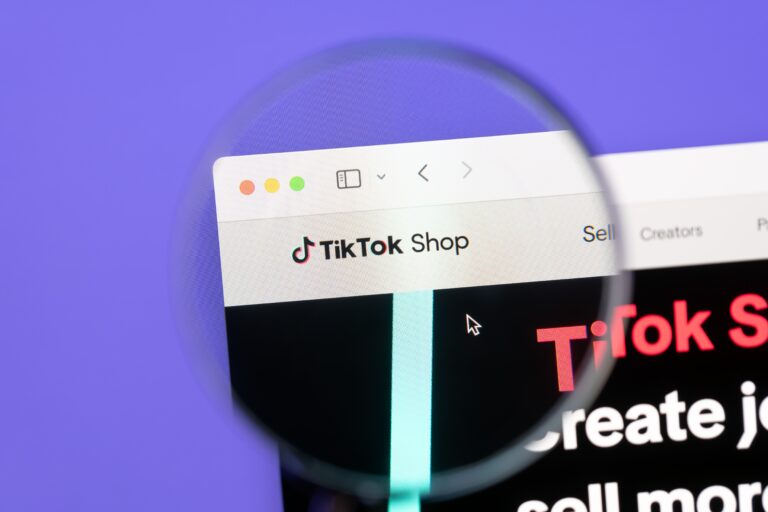Having a strong SEO strategy for your brand or business is an important aspect of doing well on Google. There’s no doubt that SEO is a long-term game, which usually means it can take a back seat to more direct channels, like Paid Search, when trying to lift a brand’s overall presence and increase traffic. However, with recent changes in the Google algorithm that have a higher focus on quality, user-first content, it’s now more important than ever to ensure your team is equipped with a dynamic SEO content strategy that will assist in building traffic, conversions, and awareness for your brand in the long run.
In this article, we’re sharing the importance of having content calendars as part of your SEO strategy, and how to use one to structure content and blend it with your brand’s overall marketing strategy.
What is a Content Calendar?

When we talk about content calendars and the importance of having one, there can be confusion about what a content calendar is and where it sits within the marketing funnel. Basically, a content calendar is a document utilised by an agency or brand that helps to strategically track and monitor the ideation of content ideas, whether that’s social media posts, blog articles, landing pages, or customer care pages. A content calendar is not, and should not be used as an endless stream of ideas or concepts – like a communal One Note document. This is fine in the beginning stages. However, a strategic content calendar needs to be actively and meticulously maintained to ensure that all SEO elements are met and best practice methods continue to be implemented across the site.
What’s the Difference between a Content Calendar and a Marketing Calendar?
You might be asking, “Our team has a marketing calendar, why do we need an SEO content calendar?”
Comparing a content calendar with a marketing calendar is like comparing apples and oranges – similar in their form but different in their purpose. A marketing calendar is usually used to inform overall brand strategy and positioning, no matter the channel. For instance, your brand might have marketing activity assigned to each month of the year, however, this will include promotions, sale periods, new launches, seasonal activity, etc. It can be overwhelming for SEOs or even marketing coordinators to extract the finer details they need from a marketing calendar when it looks at the big picture.
On the other hand, a content calendar is better suited to extracting the information of a marketing calendar and expanding on the information in a much more granular way, calling out the relevant details and assisting with bridging the gap between the broad marketing strategy and SEO-led content ideation.
How Are Content Calendars Used?

While understanding what a content calendar is is important, knowing what they do and what it can be used to achieve is the real gold. As we mentioned above, a content calendar is a great tool to help extract the broad information in a marketing calendar and translate it in a way that’s easy to digest and write about. But that’s not all it can be used for:
1. Brief in Writers
For many brands, writing content on the regular is a time-consuming task that often gets pushed down the line of priorities. Unfortunately, this can have detrimental effects on not only your keyword rankings but overall organic performance, traffic and brand awareness. Many brands will outsource their content to freelancers and agencies like Pattern or may even fall to someone within the team.
A content calendar is a fantastic way to brief writers on articles in a concise and detailed way that highlights the different topics and sub-topics, keyword focuses and relevant information to talk about. It also allows writers who are not part of the everyday brand activity (like a freelancer) to come in and write without needing to be completely integrated with the brand.
2. Schedule Content in Advance
We all know how the world of ecommerce retail can get, even at the quietest of times. An up-to-date content calendar will help you keep on top of what needs to be written and when. Instead of a long list of content ideas that get updated every once and a while, keeping your content in monthly chunks helps you to get content uploaded on time, especially when dealing with timely posts like seasonal gift guides.
3. Aligns Channels
While a content calendar should be positioned as an SEO strategy tool, it is also useful to align with the brand’s other digital channels. For instance, writing seasonally relevant content for a site’s blog is a strategic SEO method for increasing keyword rankings and speaking to your wider audience, however, this seasonally relevant content should also be shared across Social, CRM, Paid Search, and affiliate networks. A shared content calendar between channels will help bridge any silo’s between teams, helping to align content amplification and provide ideas and inspiration for future content and posts.
How to Build an SEO Content Calendar?
When looking to create your own content calendars, there are a few aspects to include that will make it much easier to write and present content ideas, especially when sharing across other channels or with internal stakeholders.

1. Provide In-Depth Keyword Research
We all know why blog content is recommended for SEO but when forming the idea for a new article, it’s important to structure your idea on the basis of strong keyword research. In your content calendar, it’s best to provide a space where all keywords that should be targeted when writing the article can be clearly seen and understood. Depending upon your team and objectives, you may want to also provide monthly search volume.
From keywords, you can look to expand to include competition and difficulty, keyword intent and if they rank for rich snippets. Having these elements stored within the calendar will not only inform the current planned content but allow for much easier future planning as you build a bank of SEO-friendly keywords from past calendars.
2. Detailed Explanation
Like with any task, the more information provided, the easier it will be for your writers to understand the brief. Outline the core objectives of the article, what topics they should talk about, questions that should be answered and particular aspects to go into more depth on. Giving as much detail as possible, and even providing an example article to reference, will help you get your vision for the piece across and means that anyone else from another team can jump into the document and understand what you’re talking about.
3. Seasonal and Evergreen
Throughout the year, your published content will differ between evergreen topics (articles that are relevant all year round) and season topics (articles that are only relevant for a particular time or occasion eg, Christmas). While it’s crucial to have a healthy mix of both evergreen and seasonal content, your content calendars should provide a distinction between the two.
You can do this by creating a spreadsheet that has two distinct rows for evergreen and seasonal topics or by having them completely separate. This will also make it easier to prioritise content when it becomes busy and people have less time to write – through the distinction between both, you can evaluate which ideas will be the most time effective for the team vs, which will be the most timely and relevant.
4. Month Chunks
It’s easier to look at content from the perspective of month chunks when scheduling content in advance. Depending upon your marketing calendar and how frequently that is updated by the marketing team, try and include around three months in advance. This will also help you look to the year ahead and understand what other seasonally relevant events are coming up that you can create content for.
For example, content directed at gifting periods, like Mother’s Day or key celebratory moments, like International Women’s Day, will need to be published in advance prior to the event due to the sheer search volume of seasonally relevant keywords. So, having these laid out in scheduled, monthly chunks will allow your team to see what’s coming up and plan content hours accordingly.
5. Track Uploads
Content calendars should also be used to monitor when the planned content is being written and uploaded. When building your content calendar, it’s important to include a section where article ideas are collated and specified if they have been uploaded, by who, the date of publication and a URL link. This will help to keep you, your writers and the marketing team accountable for written content and its publication status and whether it has been uploaded and why or why not. It helps everyone see the bigger picture of productivity, and whether there needs to be further action to solidify the importance of SEO content.
Understanding the role of content calendars within your SEO strategy is crucial to creating good content that hits relevant keywords and answers users’ questions. Content calendars help to streamline your brand’s marketing and digital channels, purposefully anchoring SEO content as a must-have rather than a nice-to-do, improving keyword rankings and overall brand awareness for clients and customers.
To understand how Pattern’s own SEO team can support your brand’s content strategy, contact us now to find out more.



